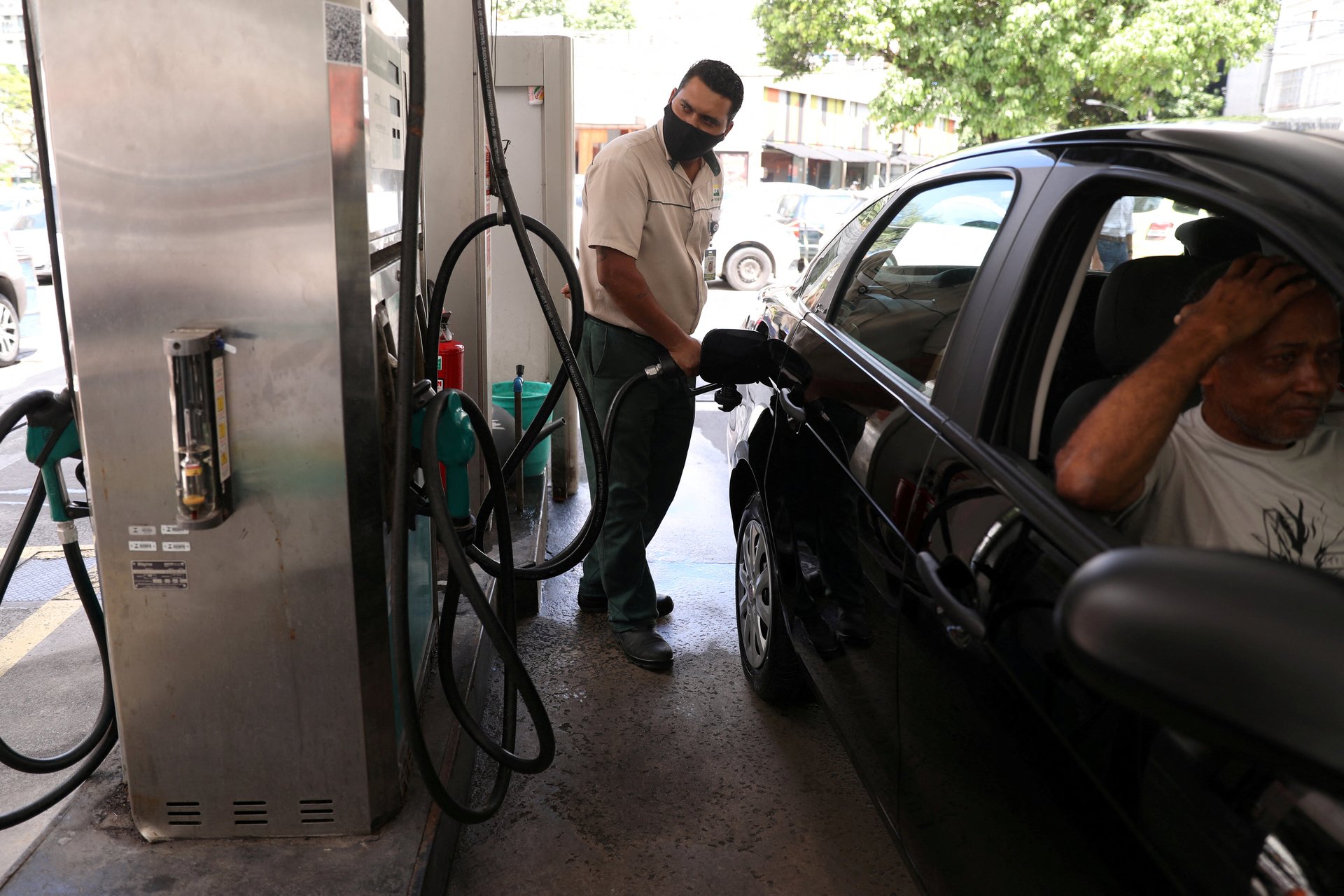Why US gas prices are falling—for now
Hurricane season and China's economy are bad tidings for US drivers and their gas bills.

After reaching record heights in June, the price of gasoline in the US is falling back to Earth. On Aug. 4, a 7-Eleven gas station in Oklahoma City became the first in the country to lower its price below $3 per gallon. (It was followed shortly by its competitor across the street; being close to many refineries and distribution hubs, Oklahoma often has some of the country’s cheapest gas). According to GasBuddy, a gasoline data monitoring and analysis firm, Aug. 5 is the 50th consecutive day in which the nationwide average price has declined, on track to fall below $4 next week.
The most important reason for the decline is falling demand: Drivers hit the limit of what they could afford and started to buy less. Gasoline demand fell 9% from through July, according to federal data released this week, at a time of year when summer travel usually pushes demand up. At the same time, the volume of gasoline in reserve is ticking up, in part because of US president Joe Biden decision earlier this year to release oil from the Strategic Petroleum Reserve. That oil took time to filter through refineries, but by now it has lowered gasoline prices by about 30 cents, according to a federal analysis. A hiatus for federal gas taxes shaved off a few more cents.
Meanwhile, other geopolitical factors have led the global crude price to fall to its lowest point since Russia’s invasion of Ukraine in February. Covid restrictions in China mean demand is still below average there. Russia has been making more crude oil available to China and India. The Organization of Petroleum Exporting Countries (OPEC) agreed on Aug. 3 to marginally increase their production quotas (although by far less than Biden had hoped when he visited Saudi Arabia in June, as the bloc has very little production capacity to spare in any case). That oil hasn’t hit the market yet, but it sends a positive signal about future supply. Meanwhile, mounting signs that the global economy may be headed into recession have investors spooked about future oil demand.
Why gasoline prices may rise again
Gasoline reserves are about 2% below average for this time of year, and minor shifts in market conditions could produce big swings in the price. With prices this low, drivers will likely return to the pump now. Hurricane season in the Gulf of Mexico is just beginning, and is expected to be more severe than average, which poses a serious threat to refineries there.
Since the pandemic, OPEC has consistently decided to keep quotas to a bare minimum in order to keep prices high. China’s economy will likely gather steam as health restrictions lift. And Russia remains a wild card, keen to flex its energy exports for geopolitical gains.
In short: The best time for a road trip is sooner rather than later.
